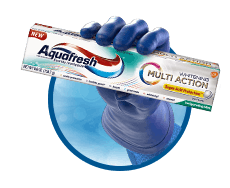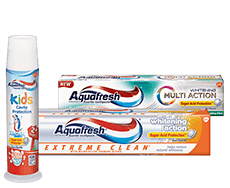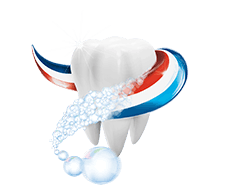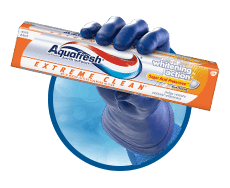Is It a Cavity or a Stain? Tooth Stains vs. Cavities
Since stained teeth and cavities can look similar, it can be hard to differentiate between them. Learn the key differences between a cavity vs. a stain and how to prevent both.
What Is the Difference Between a Cavity and a Stain?
Both cavities and stains impact your enamel but in different ways. Enamel is the hard, outer layer of your teeth that protects the inner layers.1 A cavity, also known as tooth decay, permanently damages your enamel and starts as a small hole in your tooth that needs to be treated by your dental team.1 Stains can cause the surface of your tooth to become discolored and are usually caused by certain food and drink or lifestyle habits. Extrinsic stains—stains on the outside of the tooth—can usually be corrected.2
What Can Cause Tooth Stains and Cavities?
Learn what can cause tooth stains and cavities so you can recognize when they’re affecting you and you can contact a dental professional for advice.
Cavities
Cavities are permanently damaged parts of your enamel that can develop into tiny openings in your teeth. They are caused by a buildup of a sticky film of bacteria that adheres to your teeth called plaque. When you consume acidic or sugary foods, the bacteria in plaque produce acids that can erode your enamel. The stickiness of the plaque helps the acids attach to your teeth and can break down your enamel to form a cavity.1
The symptoms of a cavity can vary depending on the location and extent of the decay. You might not have any symptoms at the onset, but as the cavity deepens, you might experience the following:3
- Toothache or tooth pain that doesn’t have an obvious cause.
- Sensitivity or pain when eating or drinking something hot, cold or sweet.
- Tiny holes or pits in your teeth that are visible.
- Brown, black or white spots on the surface of your teeth.
- Pain after biting down.
Tooth Stains
Tooth stains have a few different causes. Typically, extrinsic stains are caused by certain food and drink. Foods that can cause tooth stains are usually darkly colored, sugary, acidic or starchy. Some examples include:2,4
- Coffee
- Tea
- Soda
- Wine
- Beets
- Berries
- Chocolate
- Pasta
- Potatoes
- Popsicles
- Candies
- Pickles
- Soy sauce
- Curry
- Tomato sauce
Smoking and tobacco use can also stain your teeth.
Overall, maintaining an acidic environment in your mouth, via the food you eat or poor dental hygiene, can weaken your enamel and make it more prone to staining.2
How Can I Help to Prevent Tooth Stains and Cavities?
Both tooth stains and cavities can help be prevented with good oral hygiene.
How to Help Prevent Cavities
You can help prevent cavities and tooth decay by:1
- Brushing twice a day with a fluoride toothpaste.
- Flossing or using an interdental aid between your teeth daily.
- Eating a healthy diet and limiting snacking between meals.
- Visiting your dentist regularly for professional care.
How Are Cavities Treated?
Visiting the dentist’s office regularly is the best way to monitor your oral health and identify cavities and other problems before they escalate. Treatments for cavities could include:5
- Fluoride treatments. Applying a fluoride treatment to your cavity during its early stages can sometimes reverse the damage by restoring your enamel.
- Fillings. Fillings, or restorations, are the most common treatment for cavities that have progressed past the early stage. Fillings consist of a variety of materials that can include composite resins or porcelain. A dental professional will determine which is the best to suit your needs.
- Crowns. If the crown of your tooth, or the portion of the tooth that is above the gum line, is weakened or decayed, you may need a custom-made crown to replace your tooth’s damaged crown. Your dentist will remove the decayed area before fitting the crown to your tooth. Crowns can be made of high strength porcelain, resin, porcelain fused to metal or other materials.
- Root canals. If the cavity has reached the innermost part or your tooth—the pulp—you may need a root canal to repair the tooth rather than removing it. During a root canal, the diseased pulp of the tooth is removed and replaced with a filling. Medication may be applied to the area to clear up any lingering infection.
- Extractions. Teeth that are extremely decayed might need to be removed. Leaving the space could cause further damage causing the other teeth to shift, so always consult your dentist to determine the best type of replacement.
How to Prevent Tooth Stains
To help prevent extrinsic stains is by brushing your teeth twice a day with a fluoride toothpaste and limiting your intake of tooth-staining foods and beverages. If you are going to consume staining food, remember to brush your teeth or rinse your mouth to avoid discoloration.2
How to Treat Tooth Stains
Talk to your dentist about using at-home whitening strips and gels. These products use agents than can remove surface stains but make create side effects like sensitivity and irritation, so always consult your dentist before whitening at home.4
Another option for people looking for a brighter smile are in-office, professional whitening procedures. This can involve your dental team applying a protective gel to your gums before applying a whitening agent to your teeth. Special lighting may be used to enhance your results.4
Source Citations:
- Teeth Cavities. American Dental Association. https://www.mouthhealthy.org/en/az-topics/c/cavities. Accessed 3/31/21.
- What causes discolored teeth and is there any way to cure or prevent staining? Tufts Now. https://now.tufts.edu/articles/what-causes-discolored-teeth-and-there-any-way-cure-or-prevent-staining. Accessed 3/31/21.
- Cavities/tooth decay - Symptoms and causes. Mayo Clinic. https://www.mayoclinic.org/diseases-conditions/cavities/symptoms-causes/syc-20352892. Accessed 3/31/21.
- Tooth Discoloration: Causes, Treatment & Prevention. Cleveland Clinic. https://my.clevelandclinic.org/health/diseases/10958-tooth-discoloration. Accessed 3/31/21.
- Cavities/tooth decay - Diagnosis and treatment. Mayo Clinic. https://www.mayoclinic.org/diseases-conditions/cavities/diagnosis-treatment/drc-20352898. Accessed 3/31/21.
How Do You Know When You Have A Cavity?



Aquafresh® Multi Action® Whitening can help brighten your smile in no time.

Get 75¢ off any one Aquafresh® product.

Check out more from Captain Aquafresh® to learn how to fight cavities.

Learn more about your oral health and how Aquafresh® helps keep you feeling clean.







